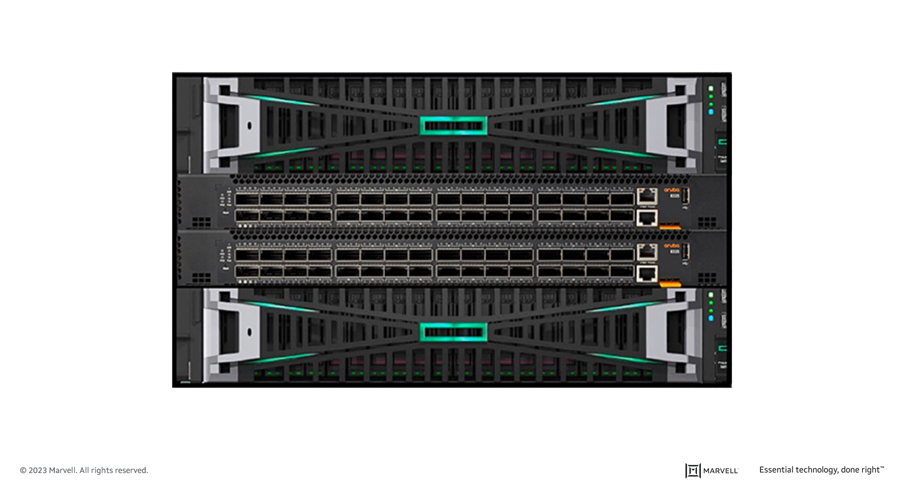

Here at Marvell, we talk frequently to our customers and end users about I/O technology and connectivity. This includes presentations on I/O connectivity at various industry events and delivering training to our OEMs and their channel partners. Often, when discussing the latest innovations in Fibre Channel, audience questions will center around how relevant Fibre Channel (FC) technology is in today’s enterprise data center. This is understandable as there are many in the industry who have been proclaiming the demise of Fibre Channel for several years. However, these claims are often very misguided due to a lack of understanding about the key attributes of FC technology that continue to make it the gold standard for use in mission-critical application environments.
From inception several decades ago, and still today, FC technology is designed to do one thing, and one thing only: provide secure, high-performance, and high-reliability server-to-storage connectivity. While the Fibre Channel industry is made up of a select few vendors, the industry has continued to invest and innovate around how FC products are designed and deployed. This isn’t just limited to doubling bandwidth every couple of years but also includes innovations that improve reliability, manageability, and security.
By Todd Owens, Field Marketing Director, Marvell
While Fibre Channel (FC) has been around for a couple of decades now, the Fibre Channel industry continues to develop the technology in ways that keep it in the forefront of the data center for shared storage connectivity. Always a reliable technology, continued innovations in performance, security and manageability have made Fibre Channel I/O the go-to connectivity option for business-critical applications that leverage the most advanced shared storage arrays.
A recent development that highlights the progress and significance of Fibre Channel is Hewlett Packard Enterprise’s (HPE) recent announcement of their latest offering in their Storage as a Service (SaaS) lineup with 32Gb Fibre Channel connectivity. HPE GreenLake for Block Storage MP powered by HPE Alletra Storage MP hardware features a next-generation platform connected to the storage area network (SAN) using either traditional SCSI-based FC or NVMe over FC connectivity. This innovative solution not only provides customers with highly scalable capabilities but also delivers cloud-like management, allowing HPE customers to consume block storage any way they desire – own and manage, outsource management, or consume on demand. HPE GreenLake for Block Storage powered by Alletra Storage MP
HPE GreenLake for Block Storage powered by Alletra Storage MP
At launch, HPE is providing FC connectivity for this storage system to the host servers and supporting both FC-SCSI and native FC-NVMe. HPE plans to provide additional connectivity options in the future, but the fact they prioritized FC connectivity speaks volumes of the customer demand for mature, reliable, and low latency FC technology.
By Nishant Lodha, Director of Product Marketing – Emerging Technologies, Marvell
While age is just a number and so is new speed for Fibre Channel (FC), the number itself is often irrelevant and it’s the maturity that matters – kind of like a bottle of wine! Today as we make a toast to the data center and pop open (announce) the Marvell® QLogic® 2870 Series 64G Fibre Channel HBAs, take a glass and sip into its maturity to find notes of trust and reliability alongside of operational simplicity, in-depth visibility, and consistent performance.
Big words on the label? I will let you be the sommelier as you work through your glass and my writings.
By Todd Owens, Field Marketing Director, Marvell and Jacqueline Nguyen, Marvell Field Marketing Manager
Storage area network (SAN) administrators know they play a pivotal role in ensuring mission-critical workloads stay up and running. The workloads and applications that run on the infrastructure they manage are key to overall business success for the company.
Like any infrastructure, issues do arise from time to time, and the ability to identify transient links or address SAN congestion quickly and efficiently is paramount. Today, SAN administrators typically rely on proprietary tools and software from the Fibre Channel (FC) switch vendors to monitor the SAN traffic. When SAN performance issues arise, they rely on their years of experience to troubleshoot the issues.
What creates congestion in a SAN anyway?
Refresh cycles for servers and storage are typically shorter and more frequent than that of SAN infrastructure. This results in servers and storage arrays that run at different speeds being connected to the SAN. Legacy servers and storage arrays may connect to the SAN at 16GFC bandwidth while newer servers and storage are connected at 32GFC.
Fibre Channel SANs use buffer credits to manage the prioritization of the traffic flow in the SAN. When a slower device intermixes with faster devices on the SAN, there can be situations where response times to buffer credit requests slow down, causing what is called “Slow Drain” congestion. This is a well-known issue in FC SANs that can be time consuming to troubleshoot and, with newer FC-NVMe arrays, this problem can be magnified. But these days are soon coming to an end with the introduction of what we can refer to as the self-driving SAN.
By Todd Owens, Field Marketing Director, Marvell
For the past two decades, Fibre Channel has been the gold standard protocol in Storage Area Networking (SAN) and has been a mainstay in the data center for mission-critical workloads, providing high-availability connectivity between servers, storage arrays and backup devices. If you’re new to this market, you may have wondered if the technology’s origin has some kind of British backstory. Actually, the spelling of “Fibre” simply reflects the fact that the protocol supports not only optical fiber but also copper cabling; though the latter is for much shorter distances.
During this same period, servers matured into multicore, high-performance machines with significant amounts of virtualization. Storage arrays have moved away from rotating disks to flash and NVMe storage devices that deliver higher performance at much lower latencies. New storage solutions based on hyperconverged infrastructure have come to market to allow applications to move out of the data center and closer to the edge of the network. Ethernet networks have gone from 10Mbps to 100Gbps and beyond. Given these changes, one would assume that Fibre Channel’s best days are in the past.
The reality is that Fibre Channel technology remains the gold standard for server to storage connectivity because it has not stood still and continues to evolve to meet the demands of today’s most advanced compute and storage environments. There are several reasons Fibre Channel is still favored over other protocols like Ethernet or InfiniBand for server to storage connectivity.